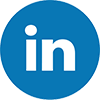
What exactly does ‘agility’ imply?
Everyone wants to be quick and nimble. Or, to put it another way, a state in which we can change swiftly and adapt to our surroundings. The same can be said for businesses, where agility can mean the difference between success and failure. So, what does it mean to be “agile”? Being agile, according to the Agile Manifesto—the holy book for agile software development—requires a mindset that values:
- Over processes and tools, it’s about people and their interactions.
- Working software trumps thorough documentation.
- Collaboration with customers is preferred over contract negotiations.
- Adapting to change in accordance with a strategy
Values are expressed in the way we think and act in various situations. Certain actions are designed and implemented using the attitude and associated values as a guiding light. Consider the case of someone who aspires to be healthy. The mindset is being health conscious and wanting to be healthy in this situation. What do you require in order to be healthy? Perhaps sleeping on time, exercising, eating a healthy diet, meditating, and other such things. These are “habits” that correspond to the attitude.
What is a framework, exactly?
People may choose a different set of practices with different levels of commitment, for example. It might be fine for me if I sleep on time six days a week, but it might be fine for someone else if they get decent sleep only four days a week; with the order shifting. Again, I may want to exercise at 5 a.m. and then eat a nutritious breakfast, whereas someone else may prefer to exercise later in the day. Different routines, activities, and methods of carrying out these tasks—each one has something unique that works for them.
Let’s just say it’s been quite beneficial to me. Now I’m passing on my successful template to others. What exactly have I done? I’ve successfully established a framework.
Frameworks for Agile
When it comes to agility, the situation is similar. We’d already seen the agile attitude and values. The concepts and principles associated with the agile mindset can be implemented in a variety of ways. Each of these “ways” is categorized as an agile framework and has its own set of techniques, patterns, and personas. Scrum, Scaled Agile Framework®, Nexus, and Large Scale Scrum are some of the most popular agile frameworks (LeSS).
The question now is: which framework is the most effective? This is comparable to asking, “What is the greatest method to stay healthy?” If the focus is on thinking and ideals, it is easy to see that there is no one-size-fits-all solution. Each person is unique, and a different “method” of keeping healthy may work for them. The guiding principles may remain the same: a combination of eating healthily, getting enough sleep, maintaining a healthy work-life balance, exercising, and maintaining a calm mind.
So, what options do you have? Let’s begin with Scrum, the most widely used agile framework. Scrum is a simple framework that is ideal for small teams working on a new product or improving an existing one. Scrum is based on the notion of incremental development with frequent feedback loops, often every two weeks—a period known as a sprint.
Framework of Scrum
The Product Owner represents the client to the team and hence assists them in prioritizing “user stories,” or slices of value that the team wants to create. The Scrum Master is the team’s facilitator and coach, guiding them to improve every day and sprint. Every sprint, the team develops a product increment and shows the stakeholders (a thin slice of) the working system that was produced during the sprint. They either improve the current slice or begin implementing the next most valuable thing based on the comments.
Another framework that focuses on technical practices is Extreme Programming XP. Scrum rarely succeeds without the XP championed focus on technical excellence. Extreme programming encourages the use of methods such as pair programming, behavior-driven development, and test-driven development, among others. Scrum and XP are extremely effective when used together. In reality, XP pioneered the User Story concept, which was eventually adopted by Scrum.
Kanban is an excellent solution if your work is more flow-based and you want to improve the lead time for your work items. It is great for teams who don’t need to reset their work every two weeks using the sprint approach. Kanban aids in the discipline of work-in-progress limitation. This makes it easier for us to “stop starting” and “start finishing” projects.
One of the most common issues that organizations encounter is that the values and concepts of the agile manifesto, as implemented by scrum, are difficult to apply in the setting of big enterprises where no single team directly offers value to a client. In this case, personas, techniques, and patterns that may be used in a large organization must be considered. Scaling frameworks enter the picture at this point. Scaled Agile Framework (SAFe), Large Scale Scrum (LeSS), and Nexus are three of the most prominent scaling frameworks.

What exactly is SAFe?
It’s worth noting that a framework will only operate if the concepts and ideas that underpin it are properly understood. From this perspective, let’s take a closer look at the Scaled Agile Framework® (SAFe®). When it comes to scalability, SAFe is the most commonly used framework. SAFe is a body of knowledge for Business Agility that includes tried-and-true practices, patterns, and workflows. SAFe is more than simply a scaling framework; it also offers advice on how businesses may achieve business agility by implementing lean-agile portfolio management techniques and agile practices at the team and program levels.
SAFe is an “operating system” for enterprise agility that operates in parallel to the hierarchical organization but with a distinct goal. The second operating system, SAFe, is geared for customer-centricity and innovation, while the hierarchical structure of organizations is intended for stability. In addition to Agile, SAFe is primarily based on Lean ideas. The Toyota Production System, created by Taichi Ohno in the mid-twentieth century, is the source of Lean Manufacturing. Working in tiny batches and imposing work-in-progress restrictions are key concepts in lean thinking.
SAFe has modified the agile manifesto’s principles and formed its own Lean-Agile Principles by incorporating Lean thinking into the mix. These ideas are powerful and can be used in all aspects of the business, including portfolios and programs. SAFe’s overarching idea is to organize the company along value streams, which are a series of steps that describe the customer journey. What could be more effective than a cross-functional team that plans, develops, and proves value creation in rapid cycles? A team of teams is the answer. An Agile Release Train (ART) is a group of teams structured along a value stream, as defined by SAFe.
The Factors That Contributed to SAFe’s Success
What is it about SAFe that makes it so powerful? It’s admitting that having agile teams isn’t enough to solve the problem. In the way it strategizes, hypothesizes, builds, and learns, an agile company must be lean and nimble. SAFe encourages an organization-wide approach to lean agile and systems thinking, as well as lean economics and flow. SAFe is a fantastic choice if you want to transform an organization’s approach to collaborating and organizing with customer centricity in mind.
SAFe’s overall enterprise guidance makes it a superb de facto choice for all businesses. If you’ve worked with a framework like Scrum before, SAFe will make the transition to business agility go more smoothly. If you’ve never worked with an agile framework before, it will help you understand that every aspect of the company must come together and collaborate in such a way that customer success and centricity become our primary priority. SAFe is the market leader in terms of agility at scale precisely because of this.
If SAFe doesn’t work for you, it’s most likely because the foundation is weak and the principles and ideals aren’t sufficiently understood. This is also true of any other framework. Do not fall into the trap of embracing SAFe’s roles and rituals without first mastering the fundamentals. For example, SAFe requires all leaders to complete a “Leading SAFe” training so that they can unlearn some of the old approaches to organizational design, responsibilities, and success measures.
Conclusion
In general, no framework is a panacea for any issue. The first approach is to identify the real issue and then use a framework or a combination of frameworks to address it. In most circumstances, a framework cannot be applied to an organization directly and as its whole.
The initial step should always be to start with the advice given there and progressively adapt parts of it to your specific situation. When it comes to frameworks, we need to take a pragmatic approach similar to how we consider the possibilities of “create vs buy” when building a solution. Building a framework from the ground up is likely to be expensive and time-consuming. Rather, acquire or reuse an existing framework and improve it using empiricism principles. This is the key to using frameworks successfully.








